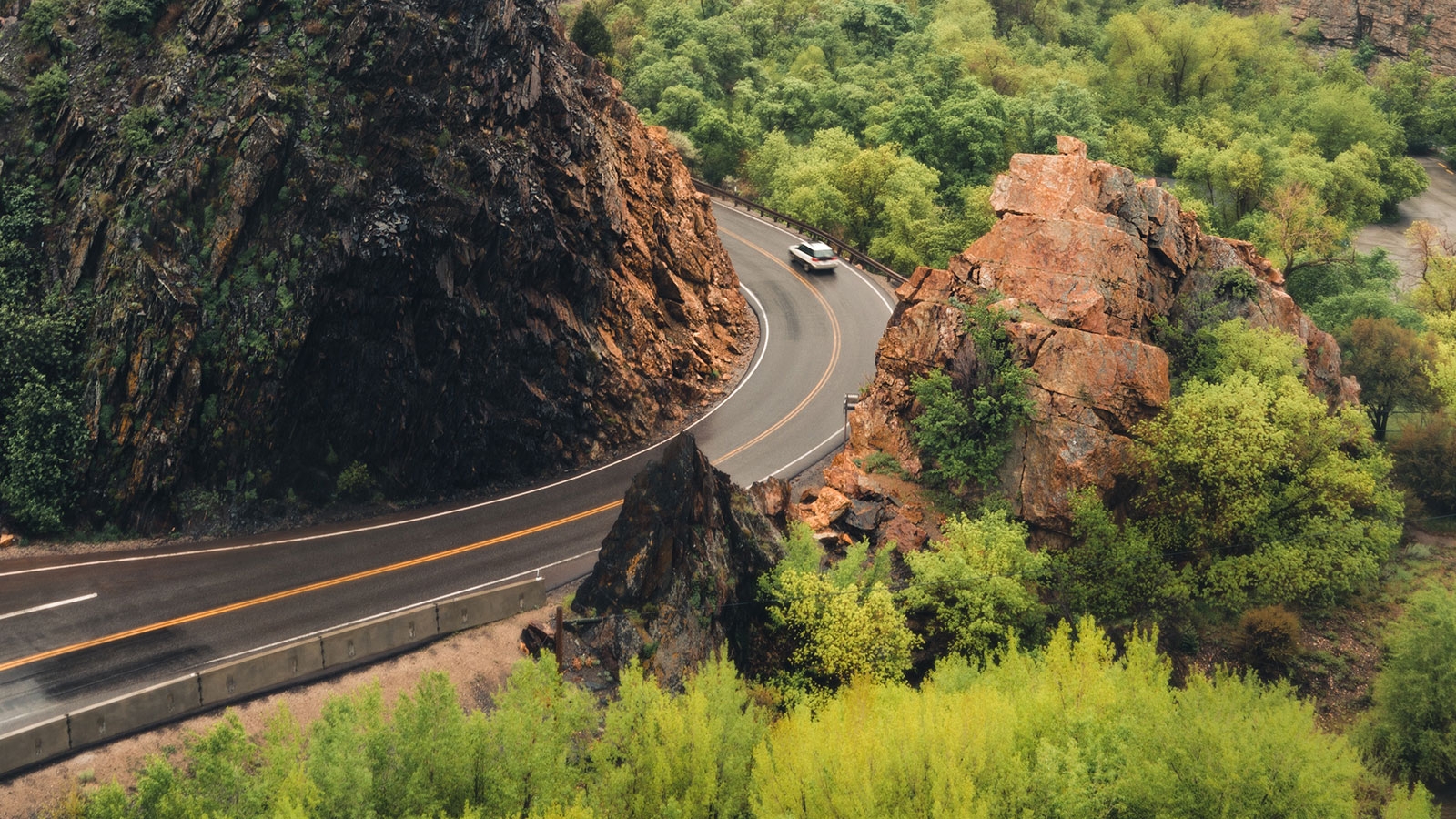Save Our Canyons values the diverse, year round recreational access that is enjoyed by a growing number of visitors and locals alike. Given the realities and subsequent challenges of a population that is forecasted to increase in the coming years, the Wasatch Canyons will be the focus of regional transportation planning and pressures. Our focus remains the conservation of the wildness and beauty of the Wasatch Range, while proactively working towards dependable, efficient, and clean energy powered options for public transportation to the many trails and areas within the range.
We can encourage people to carpool and use mass transit, such as the ski bus, in order to help reduce traffic, pollution, blood pressure, and the other impacts individual cars have on the Wasatch Mountains. View a full schedule for the UTA Ski Bus.
![]() Cottonwood Canyons Transportation Recommendations: Sept-2017 (1-99pg)
Cottonwood Canyons Transportation Recommendations: Sept-2017 (1-99pg)
![]() Cottonwood Canyons Transportation Recommendations: Sept-2017 (100-170pg)
Cottonwood Canyons Transportation Recommendations: Sept-2017 (100-170pg)
![]() Cottonwood Canyons Transportation Recommendations: Sept-2017 (171-222pg)
Cottonwood Canyons Transportation Recommendations: Sept-2017 (171-222pg)
Save Our Canyons “Ideal Transportation Future"
Save Our Canyons offers the following input on an idealized transportation system for the Mountain Accord study area.
Salt Lake Valley
The Salt Lake Valley has significant transportation issues. Our valley continues to be “car-centric”, with a large number of single occupancy vehicles (SOVs) on our roads. The existing mass-transit system in the Salt Lake Valley is under-utilized and below capacity. Resources are needed to increase ridership of the existing system and reduce SOVs. Additional express bus service is needed in the Salt Lake Valley. An example of this is the need for express bus service from downtown Salt Lake City to Cottonwood Heights via 700 East and the Van Winkle Expressway. Consideration should be given to the construction of a “belt route” rail line along the east and south sides of the Salt Lake Valley. Such a rail line would connect the University of Utah to the Blue TRAX line in Sandy. Consideration should be given to lowering fares to encourage ridership on UTA buses and rail lines. Save Our Canyons believes that the greatest public benefit would be achieved by focusing investment on mass-transit in the Salt Lake Valley.
Cottonwood Canyons and Mill Creek Canyon
Save Our Canyons believes the best method to improve transportation, while preserving the wilderness character and natural habitat of these canyons, is to implement a reliable, affordable, and efficient shuttle system using vans and buses. This shuttle system would be operational year round, but would have higher capacity during peak use periods. For the shuttle system to be successful, additional park and ride lots need to be developed. These lots would be developed throughout the Salt Lake Valley. Existing and future transit hubs would also be used as boarding stations for the shuttle system . The shuttle system would be designed to provide service for all canyon visitors: resort skiers, dispersed users, hikers, resort employees, summer season visitors, and others. Current congestion problems in the Cottonwood Canyons are largely associated with ski resort operations, most notably on weekends and holidays . The shuttle system would provide express shuttle service to each ski resort from park and ride lots/transit hubs. Winter express shuttles for dispersed use would also be part of the system. These shuttles would provide transit to users from park and rides/transit hubs to winter trailheads. Similarly, in summer, shuttles would provide hikers express service from park and rides/transit hubs to trailheads. The proposed shuttle system is NOT a traditional multi-stop bus service. The proposed shuttle system is one that conveniently transports individuals from park and rides lots and transit hubs to mountain locations with “express” service. The shuttles would have a limited number of stops, and in many instances would provide nonstop transit service (most notably to ski resorts).
A key feature of the shuttle system would be short transfer times at park and rides lots/transit hubs and at mountain locations for return service back to the park and ride lots/transit hubs. Shuttles will need to be able to meet peak demand. The success of this system is dependent on convenience and short wait times for users. Low fares need to be a part of the system to encourage use. A shuttle system using vans and buses has the benefit of being highly flexible. The shuttle system could easily (and cheaply) be modified as demands change in the future.
There needs to be an evaluation as to whether this shuttle system is publicly or privately operated (or a combination of both). There should also be an evaluation of the feasibility of a system of vans for “home to mountain” service that would augment the shuttle service described above. Such a home to mountain system would resemble an airport limousine service, with scheduled pick up and return times.
The vehicles used in the shuttle system would be vehicles appropriate for mountain travel, including travel through inclement weather. Ideally, these vehicles would utilize clean fuel systems (e.g. natural gas) to minimize impacts to air quality.
Coupled with the shuttle system, there should be consideration to implement “congestion pricing” for private vehicles in the Cottonwood Canyons. Congestion pricing is a market based approach to reducing congestion. Congestion pricing is utilized in power marketing, where users pay a higher price for power during “on-peak” hours. There are also many examples of congestion pricing in transportation. The adjustable rates for use of the HOV lanes on I-15 is an example of congestion pricing. Congestion pricing is being used in the European cities of London, Stockholm, and Milan to reduce traffic. In these cities, private vehicles must pay a fee to enter the “high-use” area of city center during peak congestion periods. These systems have been successful in reducing traffic. Congestion pricing in the Cottonwood Canyons could be implemented during peak traffic periods to reduce the number of private vehicles during peak use periods. Private vehicles would be required to pay a “congestion fee” to drive up the Cottonwood Canyons during said peak periods. Initially, this congestion fee may only be collected on weekends and holidays during the winter season (consistent with current traffic patterns). The congestion fee could be collected using the EZ pass system or possibly by an online system where a user purchases the fee on a computer or smart phone . Consideration should be given for waiving the fee for vehicles with high occupancy (3 or more passengers). The revenue collected from the congestion fee could be used to offset costs of the shuttle system. The congestion fee should be considered for Big and Little Cottonwood Canyon, but not for Mill Creek Canyon where a fee system is already in place.
The success of the shuttle system depends upon a “shift” in attitudes and behaviors of residents in northern Utah. A public outreach program would need to be put in place prior to the implementation of the shuttle system. Current public outreach programs on water conservation and air quality have helped raise public awareness about these important resource/environmental issues in Utah. The outreach program for the shuttle system would be designed to raise awareness about transportation issues in the canyons, the importance of people changing their behavior, as well as providing specific information on how the system works.
Bike lanes for safe cycling in the Cottonwood Canyons and Mill Creek Canyon need to be added. The addition of bike lanes may require some modification of existing roadways.
The Wasatch Front rail system (TRAX, Frontrunner and the Sugar House Trolley) has improved the transportation system in the Salt Lake Valley. However, Save Our Canyons believes that rail based systems in the Cottonwood Canyons (or Mill Creek) would have unacceptable impacts to the environment and the wilderness character of these canyons. The construction of rail lines in the canyons would more than double the infrastructure footprint and likely impact sensitive riparian zones. Extensive cut and fill excavations would likely be required for rail construction resulting in widespread scaring of the landscape. An elevated rail system would have unacceptable visual impacts. Rail lines also restrict access: forming “hard” barriers for hikers, skiers, and snow shoe travel. Save Our Canyons also believes a rail system in the Cottonwood Canyons is “overkill,” and that current and future transportation demand in the canyons can be met with a properly designed shuttle system.
The existing two-lane road configuration, coupled with a reliable shuttle system provides a good solution to current and forecasted travel demands in the Cottonwood Canyons and Mill Creek Canyon. A reliable shuttle system would reduce the number of vehicles in the canyons and reduce congestion. The shuttle system would also help alleviate the problem of limited parking in the canyons.
Guardsman Pass Road
Save Our Canyons does not support the year-round use of the Guardsman Pass Road. The road is not suitable for year-round use. Additionally, Marsac Avenue, the connecting road in Park City, would not be able to accommodate additional traffic load.
Parley’s Canyon and the Wasatch Back
The construction of a rail system which connects the Salt Lake City TRAX system and Park City via the I-80 corridor in Parley’s Canyon should be considered. Such a rail system would provide a transit alternative for the numerous people that live in Park City and work in Salt Lake City, as well as provide a transit connection between Salt Lake City International Airport and Park City for visitors traveling to the Park City area. This rail line would significantly reduce private vehicle trips between Park City and Salt Lake County, prolonging the life of I-80.


